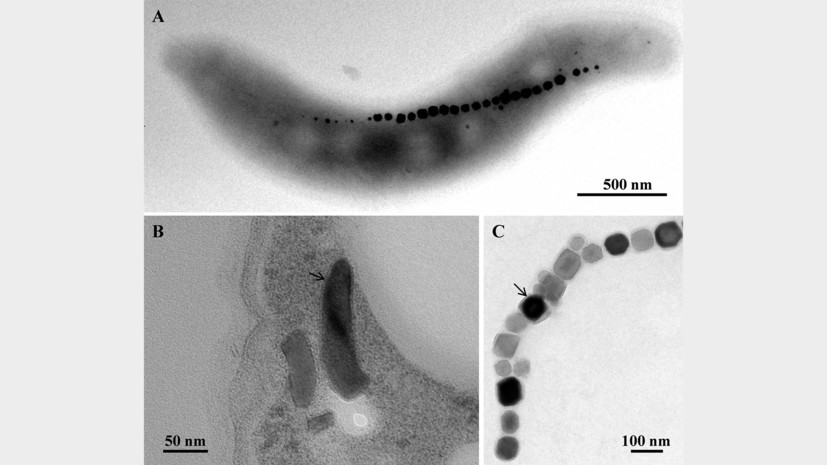Scientists from St. Petersburg Electrotechnical University "LETI" and NRC "Kurchatov Institute" - PNPI have developed a technique that will help grow cultures of magnetotactic bacteria for medical use. Their special organelles - magnetosomes can be used for targeted destruction of oncological tumors.
This was reported to RT in the press service of LETI.
The results of the study are published in the journal Applied Sciences.
Magnetotactic bacteria (MTB) that live in water bodies are able to navigate the Earth's magnetic field due to special organelles - magnetosomes.
Each magnetosome contains a crystal of magnetite, an iron oxide.
According to scientists, bacterial magnetosomes can serve as a source of magnetic nanoparticles that will have better biocompatibility than artificial counterparts.
Such particles can be used in medicine for the treatment of oncopathologies.
They can be targeted to concentrate in a cancerous tumor, and then act on them with a magnetic field.
As a result, the particles will heat up and destroy the tumor locally.
In addition, such nanoparticles can be used for diagnostics and drug delivery to neoplasms.
“These particles can be used in theranostics (a medical approach that combines diagnostics and therapy.
-
RT
), providing, in the case of their targeted delivery, the possibility of early magnetic resonance diagnosis of malignant neoplasms with simultaneous tumor therapy due to the delivery of drugs associated with magnetosomes, ”- Vyacheslav Ryzhov, a leading researcher at the Laboratory of Biophysics of Macromolecules of the Department of Molecular and Radiation Biophysics of the PNPI, explained to RT.
Gettyimages.ru
However, to create such a treatment technique, scientists need to study the properties of magnetosomes in detail.
Usually, this requires extracting organelles from bacteria.
“Usually, in order to study magnetosomes, it is required to extract these organelles from microorganisms and prepare freeze-dried (dried.
-
RT
) samples, and this may affect their properties and the reliability of the experimental results.
To solve this problem, we for the first time applied a method that allows us to study the magnetic properties of MTBs in their natural state without destroying their cells, ”Kamil Gareev, a senior researcher at the Engineering Center for Microtechnology and Diagnostics of St. Petersburg Electrotechnical University “LETI”, told RT.
Scientists used a special installation that can respond even to a very weak alternating magnetic field.
The setup allows studying signals from magnetosomes even from small samples of microorganisms.
The data obtained on the new equipment were processed on the PNPI supercomputer, which determined the signals from various structures formed in bacteria by magnetic organelles.
As a result, scientists discovered chains of magnetosomes responsible for the orientation of the bacterium along the magnetic field line, as well as other organelles that differ in size and shape, and determined their concentration.
“The proposed approach allowed us to obtain information about the magnetic and dynamic parameters and the state of magnetosomes inside magnetotactic bacteria,” Vyacheslav Ryzhov emphasized.

